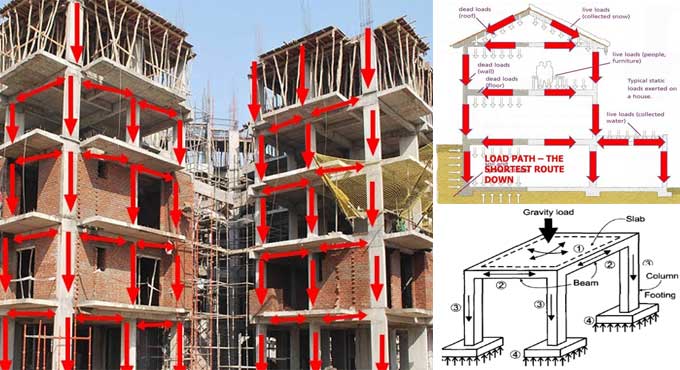NEWS | SOFTWARE | SHEET
Calculation of Loads for Column and Foundation Design
That section has been presented in relation to the demand. Generally, there is some confusion on the subject of calculating loads for column as well as footings design.
Furthermore, the manual procedure is easy.
Sorts of Loads on Column
- Self-weight of the column x count of floors.
- Self-weight of beams for every consecutive meter.
- Load of walls for every successive meter.
- Overall Load of slab (Live load + Dead load + Self weight).
The columns are even subject to bending moments, which need to be contemplated in the last design. The most optimum way to design a fine structure is to utilize state-of-the-art structural design software such as STAAD Pro or ETABS. Those tools are far forward of manual procedure with respect to structural design, and greatly suggested.
In practice of the profession, there’re certain primary suppositions in operation with respect to structural loading computations.
With respect to Columns
Self-weight of Concrete is nearly 2400 kg for every cubic meter, which is equal to 240 kN. Self-weight of Steel is nearly 8000 kg for every cubic meter. Though we suppose a huge column size of 230 mm x 600 mm with one % steel as well as 3 meters standard height, the self-weight of column is nearly 1000 kg for every floor, which is equal to 10 kN. Therefore, in calculations, self-weight of column is assumed to be between 10 to 15 kN for every floor.
With respect to Beams
Alike calculations like above. every meter of beam has dimensions (230 mm x 450 mm) without slab thickness. Therefore, the self-weight can be nearly 2.5 kN for every successive meter.
With respect to walls
Density of bricks differs from 1500 to 2000 kg for every cubic meter. With respect to a 6″ thick wall of height of 3 meters as well as a length of 1 meter, the load for every successive meter can be calculated to be equivalent to 0.150 x 1 x 3 x 2000 = 900 kg, which is equal to 9 kN/meter. One can compute load for every running meter with respect to a brick type utilizing that technique.
With respect to autoclaved, aerated concrete blocks such as Siporex or Aerocon, the weight for every cubic meter is from 550 to 700 kg for every cubic meter. Through utilizing those blocks with respect to construction, the wall loads for every successive meter can be as low as 4 kN/meter, which can lead to a substantial decrease in the construction cost.
With respect to Slab
Suppose, the thickness of the slab is 125 mm. At this point, every square meter of slab may have a self-weight of 0.125 x 1 x 2400 = 300 kg, which is equal to 3 kN.
At this point, suppose finishing load to be 1 kN for every meter as well as superimposed live load to be 2 kN for every meter. Therefore, slab load can be calculated to be about 6 to 7 kN for every square meter.
To get more details, go through the following video tutorial.
Lecturer: Civil Engineers Training Institute
Recommended Articles:
Load Calculation of Multi-story Buildings
How to Calculate Load on Column


